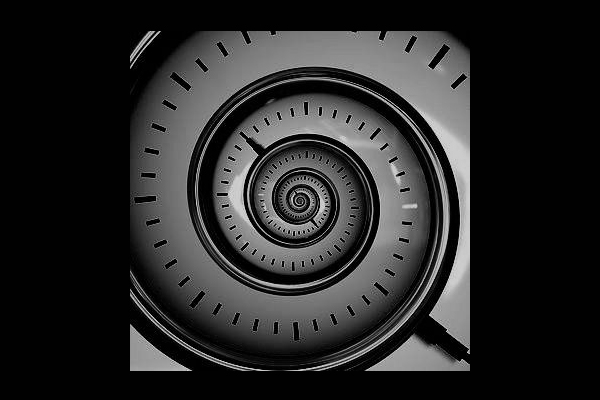Since we have no certain idea of time’s actual nature save the constructs which we impose conceptually, and since these constructs are not even universally agreed upon amongst our species. I find it a rather misguided formulation to regard artists as ahead of their continuum.
These conclusions usually are based on linear conceptions of time, seen through the opaque window of what we call history. The latter of course being an extrapolated form of linear perception, often replete with excessive referential and reverential qualities relative to a particular cultures singularity. But do artists inhabit only that narrow dimension of time /space?
Many things simply do not transverse point A to B. Causality though valid within Newtonian principles certainly does not remotely govern artistic evolution, in particular music. I contend that artistic development happens
within what we call quantum mechanics, if reality exists only when we observe/measure it, what then could possibly mean «ahead of his/ her time»?

I believe that artists which are «ahead» are intrinsically more in touch with their own time. Quite like radar or more precisely radio interferometry. Gathering and collating sources, things which exist already but are distant; not yet discernible. As well artists generally are acutely aware of their own creation of reality (or not).
If one examines closely this rather sentimental and essentially 19th century idea, one see’s that generally it rarely refers to an artist which is contemporary. Often it refers to artists of 1-3 generations removed and if one looks even closer its easy to discern certain economic, social; political forces operative whether we speak of the overt and brutal realm of parliamentary politics or the covert and insidious realm of artistic politics.
Another factor is acquisition and availability of knowledge, and crucially, access to the distribution of gained and expressed forms, i.e. art.
Here the Italian version by Edoardo Montanari..






